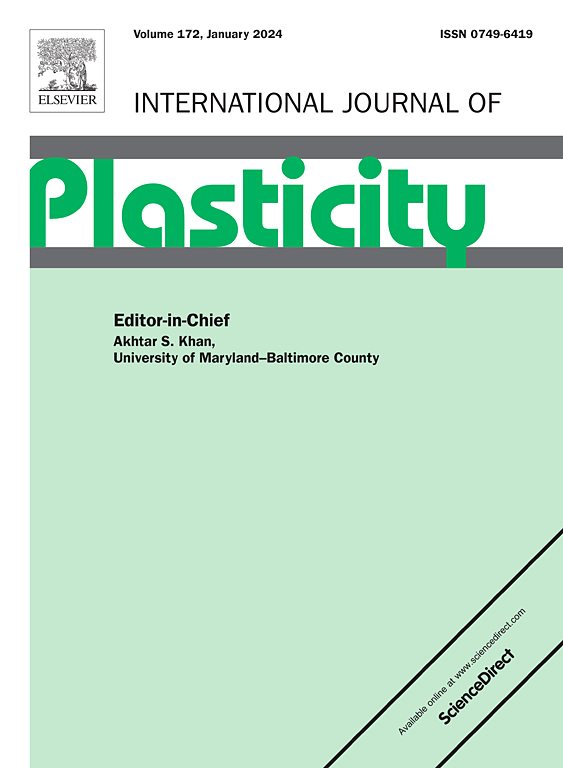Non-equilibrium solidification complexions in additive manufacturing enable exceptional creep resistance: An example in nickel-based superalloys
IF 12.8
1区 材料科学
Q1 ENGINEERING, MECHANICAL
引用次数: 0
Abstract
Insufficient time-dependent properties at elevated temperatures, particularly creep resistance and ductility, are currently crucial factors impeding the use of additively manufactured Hastelloy X (HX). To address this limitation, a micro-nano olive-shaped carbide network was purposely introduced into HX via laser powder bed fusion (L-PBF) and following optimized heat treatment. The inherent chemical heterogeneity combined with the sufficient stored energy of boundaries, induced by the ultrafast cooling rate of the L-PBF process, creates favorable conditions for the formation of micro-nano precipitate networks. Compared to its untreated counterpart, the optimized HX exhibited considerably improved creep resistance, with an 85 % increase in creep life and a 122 % improvement in fracture ductility. Furthermore, through multiscale characterization techniques and theoretical calculations, the preferential precipitation behavior of the micro-nano carbide networks was systematically investigated from both kinetic and thermodynamic perspectives. The superior creep resistance of the L-PBF HX, decorated with carbide networks, stems from the synergistic effects of the high cavity surface energy, effective pinning for grain boundary sliding, and reduced plasticity-assisted diffusion rate, which markedly inhibit the nucleation and growth of microvoids during high-temperature deformations. This work provides a comprehensive understanding of the strengthening mechanisms associated with non-equilibrium solidification-facilitated carbide networks, providing new insights into the targeted design and optimization of L-PBF alloys.


在增材制造中,非平衡凝固可以实现优异的抗蠕变性能:以镍基高温合金为例
高温下的时效性能不足,特别是抗蠕变性能和延展性,是目前阻碍增材制造哈氏合金X (HX)使用的关键因素。为了解决这一限制,通过激光粉末床熔合(L-PBF)和优化热处理,有目的地将微纳米橄榄形碳化物网络引入HX。L-PBF工艺的超快冷却速率所导致的固有的化学非均质性和足够的边界存储能量,为微纳析出网络的形成创造了有利条件。与未经处理的HX相比,优化后的HX具有显著的抗蠕变性能,蠕变寿命提高85%,断裂延展性提高122%。此外,通过多尺度表征技术和理论计算,从动力学和热力学的角度系统地研究了微纳碳化物网络的优先沉淀行为。经碳化物网络修饰的L-PBF HX具有优异的抗蠕变性能,这是由于高空腔表面能、有效钉住晶界滑动和降低塑性辅助扩散速率的协同作用,从而显著抑制了高温变形过程中微孔的形核和生长。这项工作提供了与非平衡凝固促进碳化物网络相关的强化机制的全面理解,为L-PBF合金的针对性设计和优化提供了新的见解。
本文章由计算机程序翻译,如有差异,请以英文原文为准。
求助全文
约1分钟内获得全文
求助全文
来源期刊

International Journal of Plasticity
工程技术-材料科学:综合
CiteScore
15.30
自引率
26.50%
发文量
256
审稿时长
46 days
期刊介绍:
International Journal of Plasticity aims to present original research encompassing all facets of plastic deformation, damage, and fracture behavior in both isotropic and anisotropic solids. This includes exploring the thermodynamics of plasticity and fracture, continuum theory, and macroscopic as well as microscopic phenomena.
Topics of interest span the plastic behavior of single crystals and polycrystalline metals, ceramics, rocks, soils, composites, nanocrystalline and microelectronics materials, shape memory alloys, ferroelectric ceramics, thin films, and polymers. Additionally, the journal covers plasticity aspects of failure and fracture mechanics. Contributions involving significant experimental, numerical, or theoretical advancements that enhance the understanding of the plastic behavior of solids are particularly valued. Papers addressing the modeling of finite nonlinear elastic deformation, bearing similarities to the modeling of plastic deformation, are also welcomed.
 求助内容:
求助内容: 应助结果提醒方式:
应助结果提醒方式:


